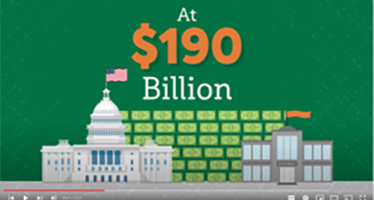District Budget Woes Likely Means School Closures: Here’s What Advocates Need to Know
With school now in session, some school districts that are struggling financially — largely due to the drying up of federal pandemic funds, higher costs, and lower student enrollment — have been deciding whether they need to close some school doors for good. The decision to shutter a school or consolidate — merge multiple schools into one — is no easy decision. Yet it is one that districts in financial distress may make to 1) save money; and 2) to reprioritize resources with the hopes of boosting achievement, namely of students attending under-enrolled schools that are low performing.
Yet, for all these very valid reasons, reading a news report about the approaching “school closure cliff” took me back to a somber place. In 2010, the Charlotte-Mecklenburg School Board voted to shut down my high school. E.E. Waddell High was a majority Black and Latino, high-poverty, under-enrolled school — fitting the profile of the types of schools often found on the chopping block. This was just one year after I graduated and began attending classes at the state’s flagship university, UNC-Chapel Hill. In the spring of 2011, I paid my former AP European History teacher a visit, unknowingly on the exact day that students received their new school assignments.
It was gut-wrenching. I stood at my former teacher’s desk, frozen. There was silence, then slight chatter. “Where are you going?” “I can’t believe that this is really happening!” “They are really doing this to us, huh? “I don’t want to go to this school!” These are just a few of the phrases that I can remember students shouting once their new reality settled in.
While school closures may lead to savings — which some national research suggests does not even happen at a substantial scale — they also result in huge social costs. A 10-year lookback at the closure of 50 public schools in Chicago reveals the very real consequences of closing schools, not just on the students and families, but even the built environment of where the shuttered schools are located. Buildings sit vacant, and grass becomes overgrown, blighting the neighborhood. Advocates should push district leaders to factor these and other costs into their decision-making.
For many, especially communities of color and communities living in poverty, schools are more than just a place students go to learn. They are pivotal community institutions. They are where people go to vote. They are where children can get free meals during the summer. They are where families in need can do laundry. During the pandemic, schools served as health hubs, offering free COVID-19 testing and vaccinations.
School closures and consolidations may be unavoidable for some districts as they try to balance their budgets against a backdrop of declining revenue. This is a hard truth. What is also true, however, is that district leaders should meaningfully engage with potentially displaced students, families, and educators, before, during, and after their displacement. Advocates should demand transparency and inclusiveness from district leaders as they craft proposals and plans. They should also demand that districts provide displaced students and families adequate resources to make the transition to a new school harmless as possible.




